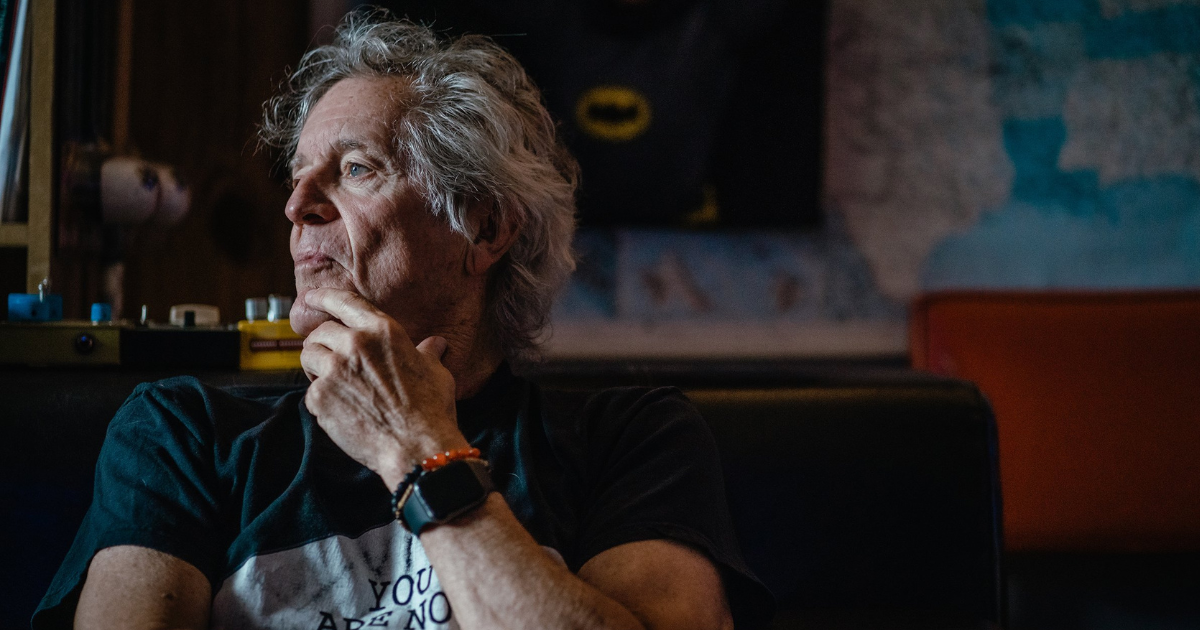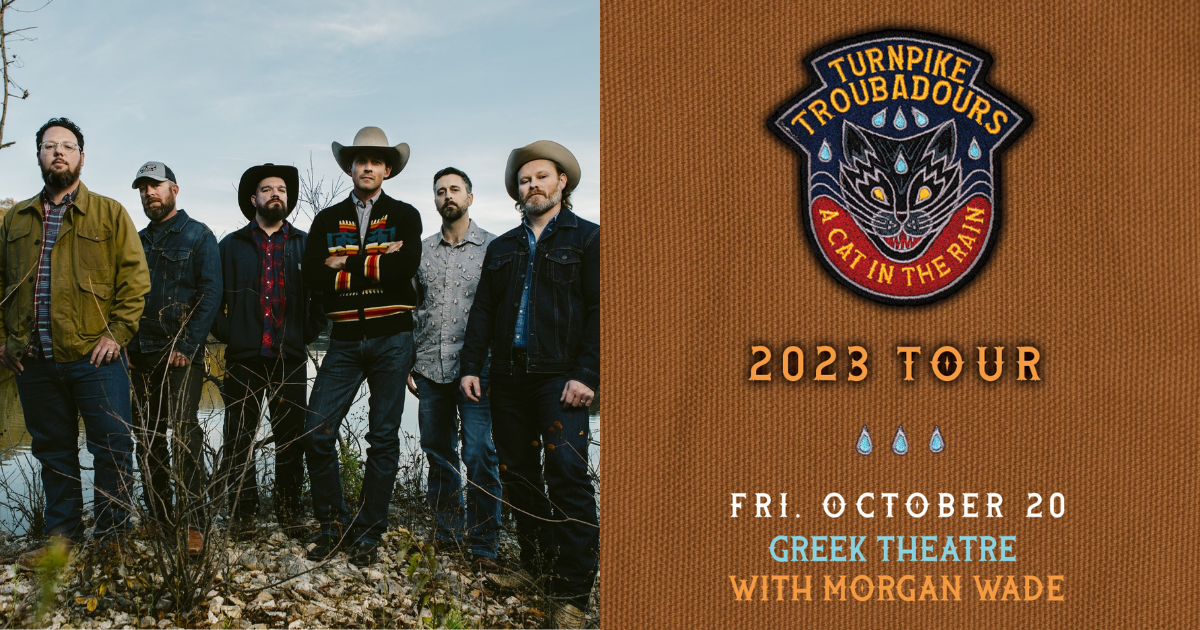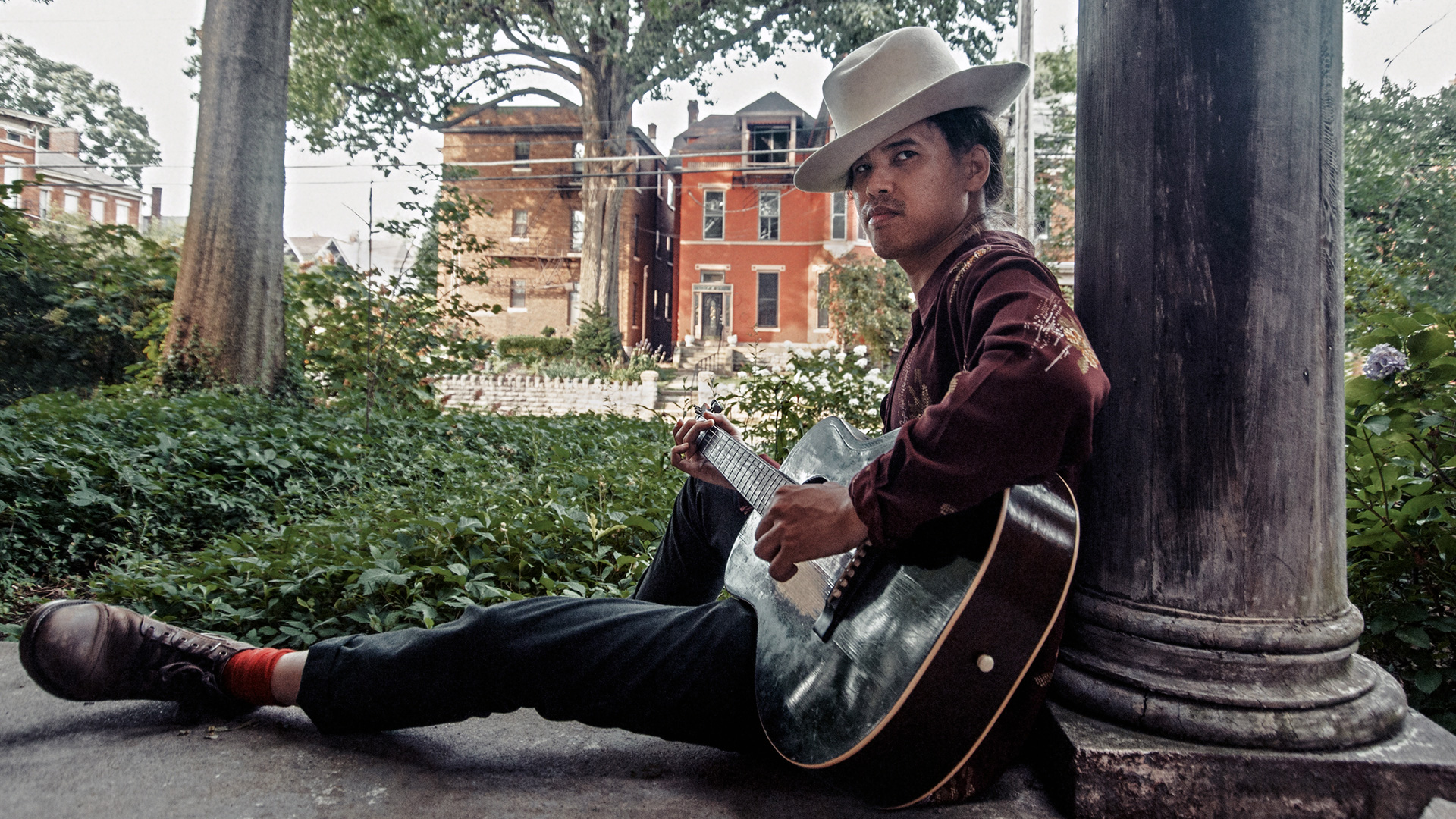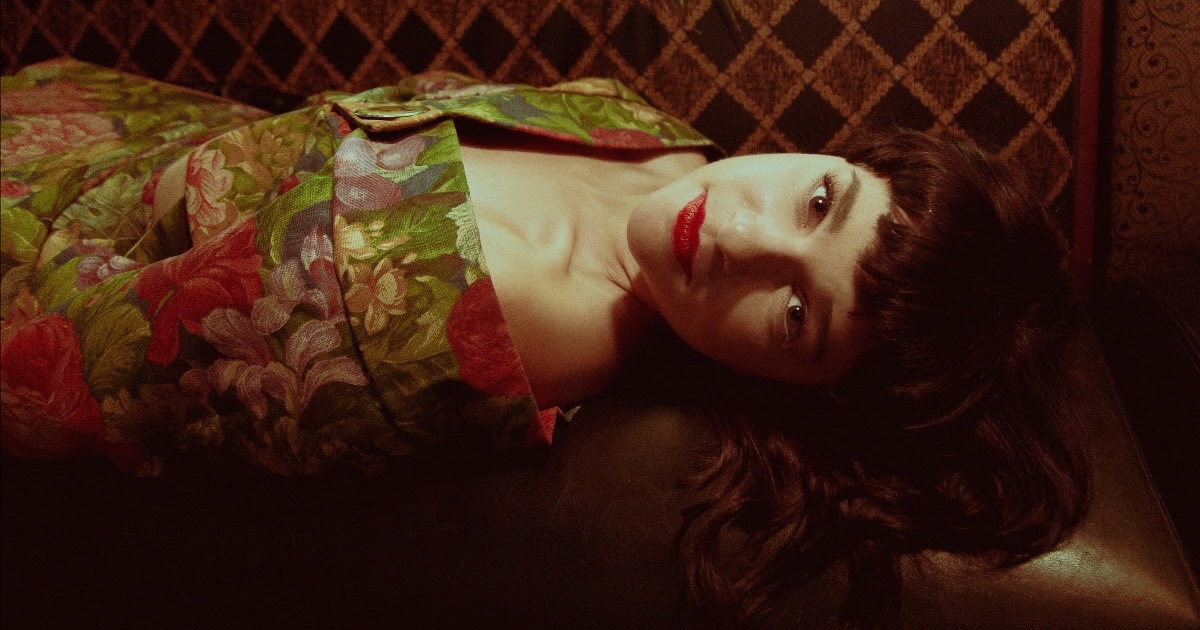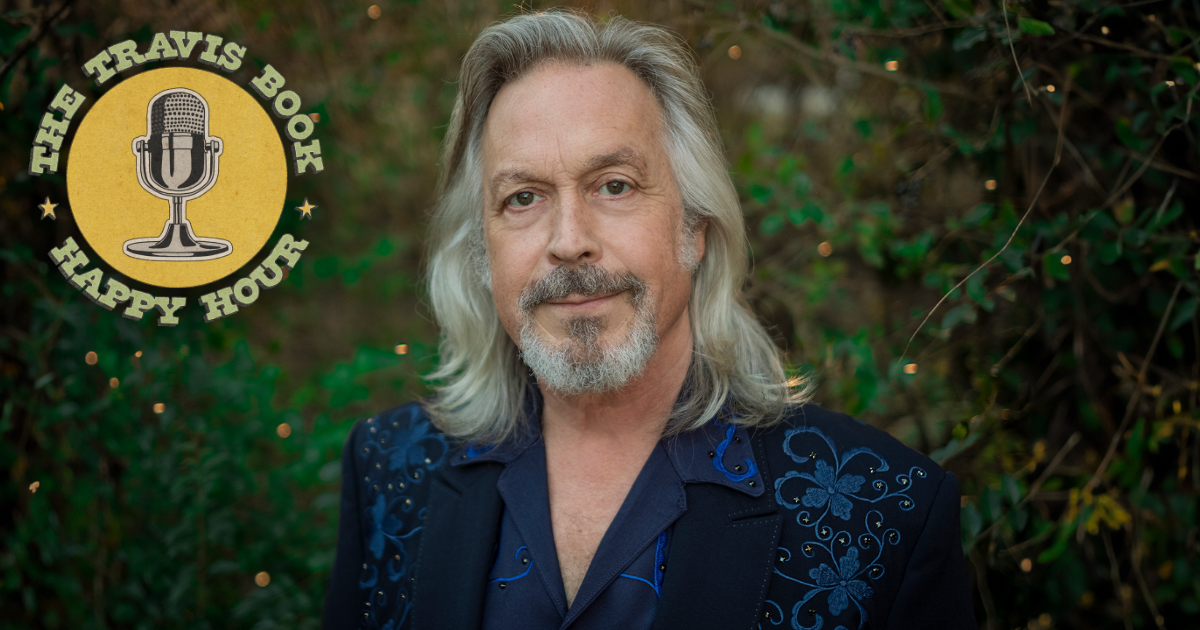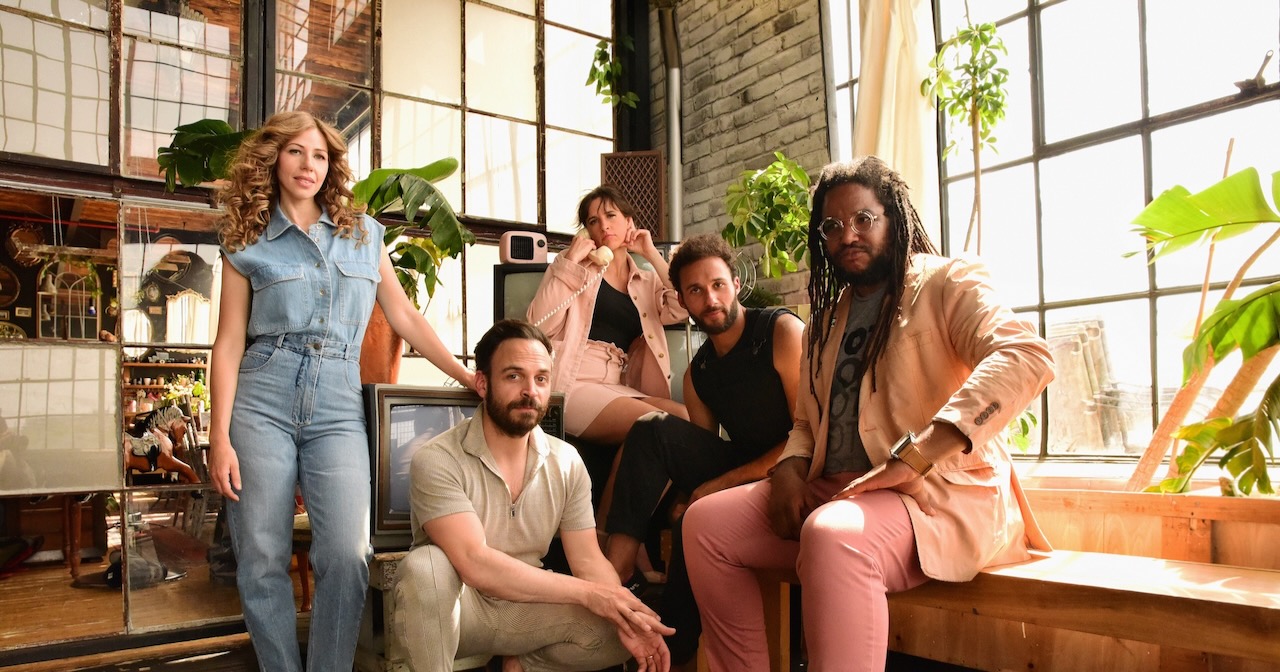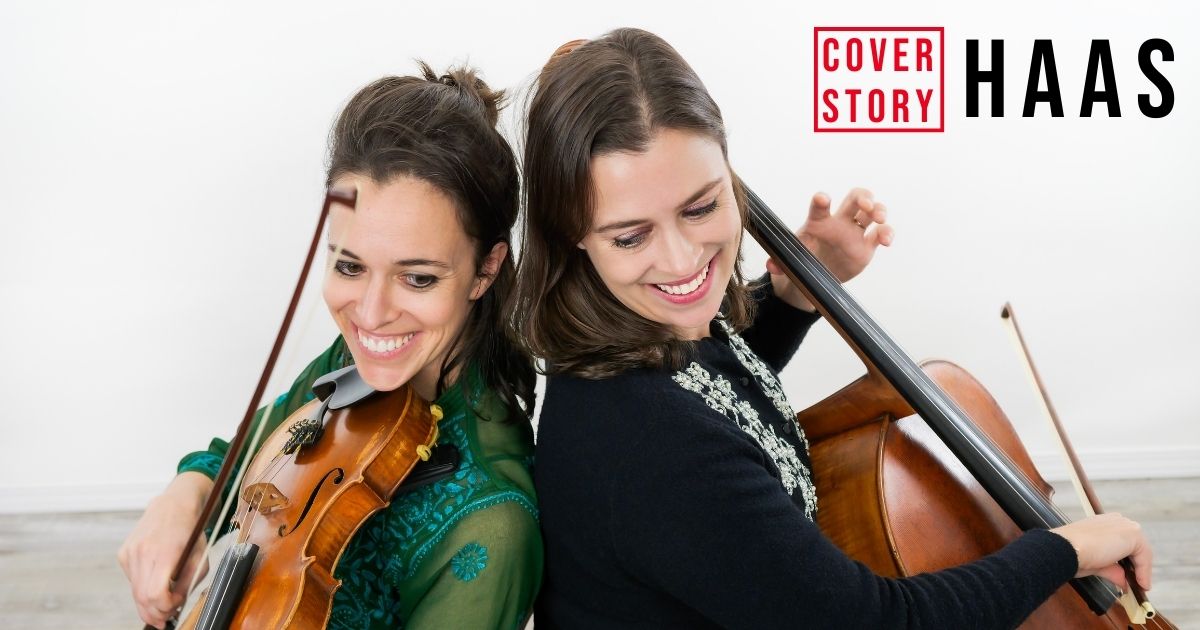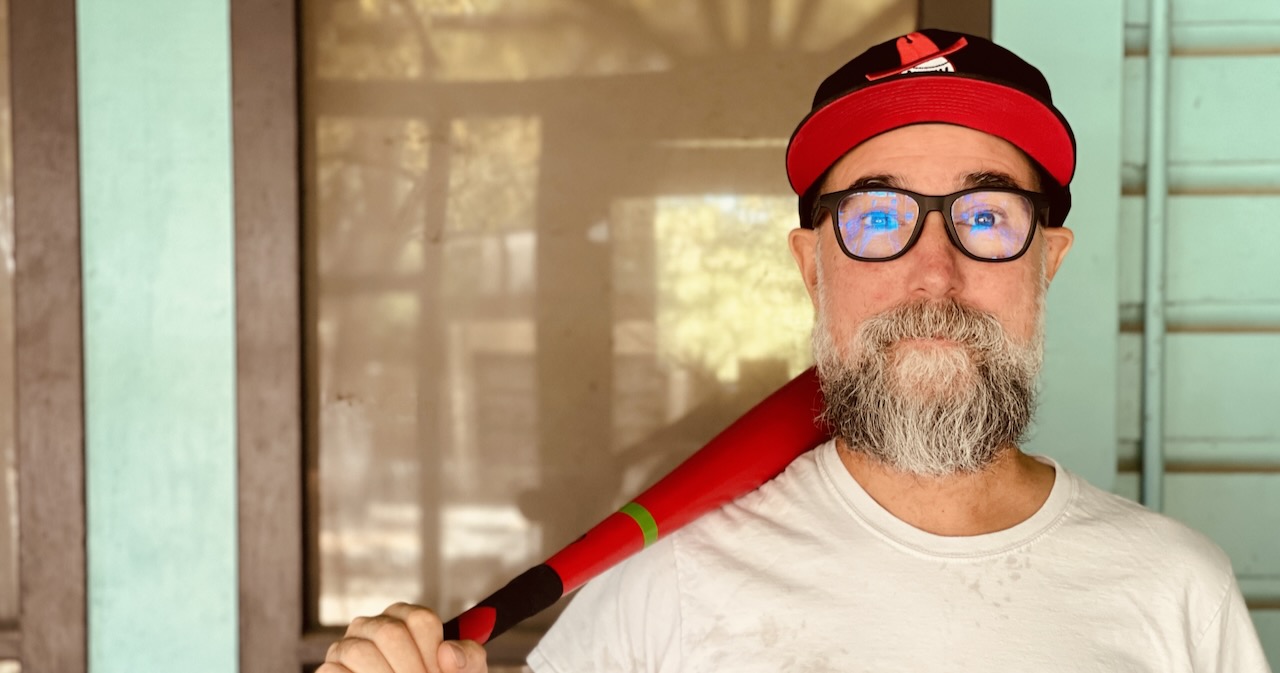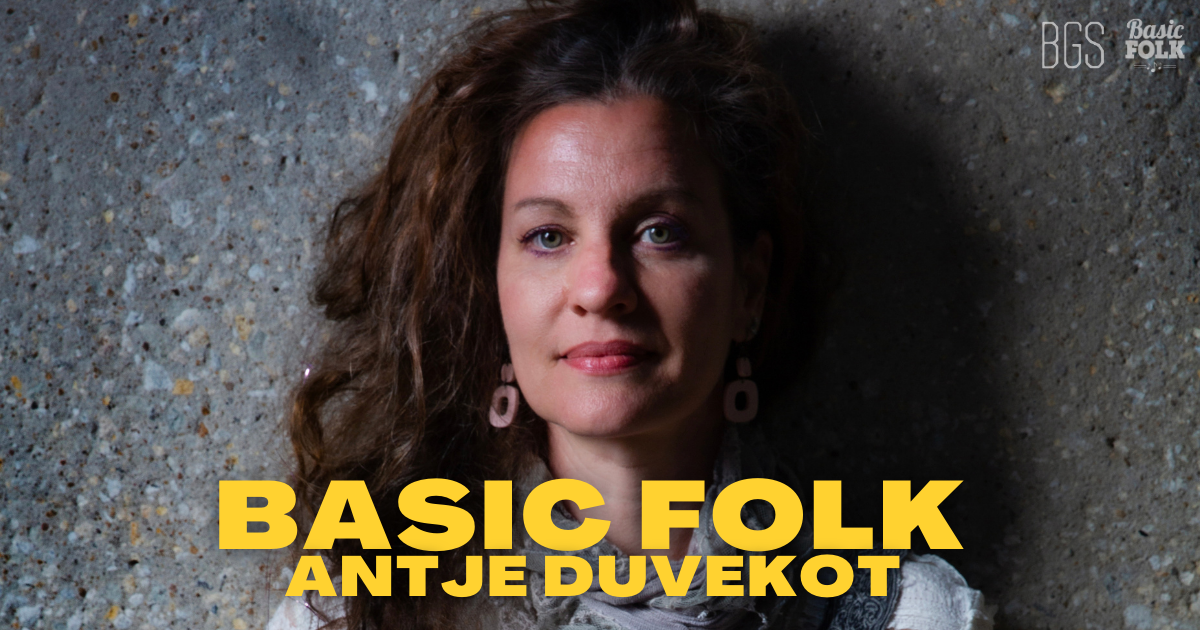GIVEAWAY: Enter to Win Tickets to Turnpike Troubadours @ the Greek Theatre (Los Angeles) 10/20
BGS 5+5: Jolie Holland
Artist: Jolie Holland
Hometown: Houston-bred, LA-based
Latest Album: Haunted Mountain
Personal Nicknames (or rejected band names): They say you can never nickname yourself. Ones that have come to me fair and square are Soup Kitchen, bestowed by the great author Vanessa Veselka, because every time I stayed in her basement on tour I’d cook for the household. And I had the nickname Jewelweed for a minute, because some friends standing nearby pointed out some jewelweed growing, and I thought they’d called my name.
What’s your favorite memory from being on stage?
There are so many beautiful moments to remember. I enjoy being a “sideman” more than being in the spotlight. I’m a musician and a writer, and never was interested in performing, per se. I remember doing free improv on violin with a small trio at a flop house in Austin, Texas while some circus performers played with fire and danced. It wasn’t a show, just artists being together. My Wine Dark Sea band was really fun, a loud, chaotic band, but full of some of the most sensitive and wild musicians. I recently got to play a three-night residency with Jim White on drums, Adam Brisbin on baritone guitar, and Ben Boye on piano. It was like being a little tornado in a hurricane. So much motion and power.
What other art forms — literature, film, dance, painting, etc — inform your music?
I came to music after I was deep in visual art, which really centers originality. So I came to music with that lens. It literally took me decades to understand that not everyone is interested in that kind of ethos. A lot of people are happy staying in one or two related genres. But for me, I always have more questions.
What has been the best advice you’ve received in your career so far?
I have basically received no advice in my career. It’s been almost impossible to find trustworthy mentors. So I’ve just watched other people I admire and tried to learn from them. I love seeing how open-hearted and generous both Boots Riley and Marc Ribot are with their audiences. Both of them are political organizers, so that makes sense. They regard their position on stage as a place from which they inspire action and movement. I regard my audience as my collaborators, in many ways. We need each other.
Since food and music go so well together, what is your dream pairing of a meal and a musician?
I love to cook with or for the musicians I love. I’m imagining making a jelly roll for Jelly Roll Morton. My great uncles were pimps who lived 6 blocks from Jelly Roll Morton at the same time he was pimping. So I always imagine they must have known each other. Their little sister, my grandmother, passed for white and moved to North Louisiana to get away from the mafia. I wonder if he would have liked this jelly roll I once made with a genoise sponge, orange blossom water in the whipped cream, and a bitter marmalade I made with Seville oranges from my neighbor’s yard.
How often do you hide behind a character in a song or use “you” when it’s actually “me”?
I feel like this question is important, but I’m answering it sideways: Why do a lot of people assume all songs are autobiographical? I come from the perspective that lyrics are literature, and a song can be a one act play. Songs can be fiction, drama, and not just memoir.
Photo Credit: Chris Doody
WATCH: Nat Myers Brings the Healing Power of the Blues to PBS News Hour
On the heels of his critically-acclaimed Easy Eye Sound release, Yellow Peril, Korean-American blues musician Nat Myers made his national television debut on PBS News Hour last month, channeling the healing power of the blues. Born in Kansas and raised in Tennessee and Kentucky, Myers found the guitar and developed his right hand technique as a youngster. The aspiring poet developed his chops, his lyrical style, and his songwriting perspective as many blues musicians do: Busking and performing for his own enjoyment and entertainment.
Yellow Peril, a stand out among Easy Eye’s and Dan Auerbach’s now expansive catalog of first-rate recordings, finds Myers superseding the stardom of his collaborators – like Yola, another Easy Eye alumnus, did before him – with a collection of songs that capitalize on blues’ unique ability to consume, digest, and engage with complex and divisive issues. Race, justice, equality and equity, class, consumerism, and many more hot-button issues permeate this album. But overall, this is still a rollicking, enjoyable, danceable collection of songs, striking a deft balance that feels inherent to a genre through which Myers expresses himself so well.
Watch Nat Myers’ PBS New Hour appearance above and don’t miss his recent Grand Ole Opry debut, as well. Myers will continue to tour Yellow Peril through the end of 2023 and into 2024 – don’t miss this singular voice among the current American roots music scene.
Photo Credit: Jim Herrington
WATCH: Rachel Baiman, “Young Love” (Live)
Artist: Rachel Baiman
Hometown: Nashville, Tennessee
Song: “Young Love” (Live)
Album: Common Nation of Sorrow Deluxe Edition
Release Date: December 1, 2023
Label: Signature Sounds
In Their Words: “Sometimes songs I’ve written become less relevant and relatable for me over time, but this one has seemed to stick and grow with me, such that I reach for it during live shows, often as a closer. I’m grateful for the chance to re-present it with two of my favorite musicians!
“This version of ‘Young Love’ was recorded live in Knoxville with Andrew Marlin and Josh Oliver of Watchhouse. They have such distinct voices, vocally as well as on their instruments, and it’s amazing to hear this song transformed under their influence. Andrew and Josh helped launch my solo career with the album Shame, and just like this song I have continued to love their music and learn from them over time.” – Rachel Baiman
Track Credits: Written by Rachel Baiman.
Performed by Rachel Baiman, Andrew Marlin, and Josh Oliver.
Engineered by Kaitlyn Raitz and Ben Plotnick.
Mixed by Sean Sullivan.
Mastered by Jon Neufeld.
Photo Credit: Natia Cinco
Video Credits: Owen Scarlett Productions, Owen Scarlett and Charissa Kroeger
The Travis Book Happy Hour: Jim Lauderdale
I’ve shared the stage with Jim Lauderdale many times over the years and have always enjoyed his approach and attitude. Funny, self-effacing, eager to entertain, Jim’s a gem and the most prolific songwriter and recording artist I know. I was honored that he agreed to join me for the happy hour and I couldn’t wait to edit this show and release it.
LISTEN: APPLE • SPOTIFY • STITCHER • AMAZON • MP3
This episode was recorded live at The Grey Eagle in Asheville, North Carolina on November 30th, 2022. Huge thanks to Jim Lauderdale, Mike Ashworth, and Matt Smith.
Timestamps:
00:06 – Soundbyte
00:33 – Introduction
02:11 – “Rise Sun”
05:54 – Introducing Jim Lauderdale
07:33 – Interview 1
23:08 – “Patchwork River”
28:02 – “Planet of Love”
32:58 – Introducing “Friends Again”
35:28 – “Friends Again”
38:05 – Interview 2
51:20 – “The King of Broken Hearts”
54:30 – Introducing “The Opportunity to Help Somebody Through It”
56:35 – “The Opportunity to Help Somebody Through It”
1:02:22 – “That Kind of Life (That Kind of Day)”
1:06:10 – Outro
Editor’s note: The Travis Book Happy Hour is hosted by Travis Book of the GRAMMY Award-winning band, The Infamous Stringdusters. The show’s focus is musical collaboration and conversation around matters of being. The podcast is the best of the interview and music from the live show recorded in Asheville and Brevard, North Carolina.
The Travis Book Happy Hour Podcast is brought to you by Thompson Guitars and is presented by Americana Vibes and The Bluegrass Situation as part of the BGS Podcast Network. You can find the Travis Book Happy Hour on Instagram and Facebook and online at thetravisbookhappyhour.com.
Photo Credit: Scott Simontacchi
LISTEN: Lake Street Dive, “Neighbor Song” (Feat. Madison Cunningham)
Artist: Lake Street Dive
Hometown: New York City, New York
Song: “Neighbor Song” (Featuring Madison Cunningham)
Release Date: October 6, 2023
Label: Fantasy Recordings
In Their Words: “Madison Cunningham is an extremely special musician, the kind who can make a single note sound like music and who breathes life into every song that she comes into contact with. We feel so honored to have had her join us on one of our songs. We first recorded ‘Neighbor Song’ in 2010, shortly after a few of us had moved to Brooklyn. The song narrates an experience, all too familiar to many New York City apartment dwellers, of overhearing your neighbors making love. Involuntarily bearing witness to such intimacy inspires a potent mix of emotions from annoyance to despair to compassion. It’s a fun song to play live because we get to walk the audience through this emotional journey. Some audiences laugh a lot when we play it. Some cry a lot. In preparing to do this song on tour with Madison, we came up with a new musical treatment for the song to bring out some different sides of those emotions. We recorded it with Madison in Brooklyn, live in one room in a single take. We hope it makes you laugh and/or cry!” – Lake Street Dive
Photo Credit: Shervin Lainez
Cover Story: Brittany and Natalie Haas on Sharing Melody, Rhythm, and Space
What changes about the oft championed phenomenon of “family harmonies” when the voices entwined together are not voices at all, but strings, plucked and bowed and fingered? It’s a question that immediately comes to mind as you hear the first notes of Haas, the recent duo album released by sisters, fiddler Brittany Haas and cellist Natalie Haas. It’s also a question that immediately came to mind as we chatted via Zoom last month.
“I feel like I connect more deeply with Brittany than anyone else from a rhythmic standpoint,” Natalie responds after a thoughtful pause. “That’s not so much the family harmony thing, but it does play into everything.”
The familial blend they’ve established as adults – in many ways, Haas is their first deliberate and intentional music making as a pair since their teen years – defies any and all boundaries and language, as they swap melodic hooks and call and respond and toggle between accompanying and leading, adding texture and tenderness or vigor and enthusiasm. Their interplay is as comfortable and cozy as you would expect these two sibling virtuosos to be together, their reunion the not-so-subtle underpinning that makes the entire collection of tunes and sets sparkle.
This is family harmony – and family rhythm – but unspooled, complicated, and set to a new acoustic, Celtic, chambergrass sound that defies categorization. Haas also gently and kindly stands in implied opposition to more masculine, performative, and competitive musicians and groups in similar spaces. It’s a brilliant, crave-able album that showcases how much can be accomplished musically when one’s goal isn’t just the cooperative music one creates, but the space one opens up with another in which you cultivate that cooperative music.
I wanted to start by just asking y’all how long it’s been since you put out music together, or since you’ve been in like a creative space together? How does it feel to be “reunited” in this way?
Natalie Haas: We sort of played together as kids in chamber music groups and youth symphony together. And we went to fiddle camps together – that was how we got excited about maybe doing music as a career. That would sort of continue throughout the year, because the way for us to continue all that excitement and motivation that we got at fiddle camps was for us to play together.
We did the odd gig together as teenagers, like farmers markets, school performances, and that kind of thing. Then we sort of went our separate ways and we’re both very busy doing our own thing, but we took every chance we got when other people would hire both of us to be on their gigs. We always said yes because we just wanted to hang out with each other. So this is like the first time that we’ve done anything like this and it’s pretty exciting.
The way that your musical paths have diverged, they don’t feel like they’re that separate from each other. It feels like the vocabulary that you both draw from is very similar. When you started sitting down to think about doing an album together, what changed about the way that you thought about music separately or together?
Brittany Haas: That’s a cool question. I think, it all felt kind of new in a way, but also so familiar, you know? Because it’s us. We have made a lot of music together. I think on my side, it was really cool because Nat already had a bunch of tunes. So some of [our collaboration] was just like, schedule based, it was like, “Okay, we know we want to do this thing, because we’ve been getting odd gigs.” It was really like motivated by the fact that we had shows coming up, and that was a reason to be like, “Let’s have new material for that.”
Then we were like, “Here’s our days when we can put together material.” Nat had just done a writing session where she had all this new stuff ready to go. These are the tunes that she’s cranking out and they feel very much like they come from something or some place that is like so near and dear to me, because it’s from our shared fiddle-camp upbringing. That’s like the source, the well, where the tunes come from, even though they’re new and different. It feels like very homey, I guess? The kind of tunes. And then I think we’ve just both grown a lot over the decades as musicians and as arrangers. We like bring more stuff to the table than when we were teenagers.
NH: I should certainly hope so! [Laughs]
That is the goal. [Laughs] That leads really naturally to my next question, which was going to be about material curation, especially because you both have demanding schedules that kept you apart, I’m sure, during the album creation to some degree. What was it actually like when you were like setting aside that time, like you’re talking about, to get together to make the music? What was the curation process like? It’s all originals, but one, yes?
NH: Yes. And yeah, that’s the nice thing about us both being busy is when you set aside a block of time, that’s all you are focused on. Brittany had all these amazing musical ideas and made all of my tunes better the minute she got her hands on them. The arranging process, it was pretty easy, because we’re both, comfortable switching back and forth between roles. I was just amazed at how much we got done in such a short amount of time, both in the arranging process and in the recording process. It all felt very easy. [Laughs]
BH: We did the bulk of it together, I think we had like a week or maybe slightly under a week when we first met to gather the material. And wasn’t that before we even knew we were making a record then?
NH: Oh yeah, that was preparing for a tour. Our first adult sister tour.
BH: No, no, no – second.
NH: Oh, second. Yeah! Because we toured Ireland. Right. We were playing all of these trad tunes, our shared repertoire from our of teenage years. And then for [Haas], we decided to make it all original. For the most part.
BH: Do you remember the moment when we actually said, “Let’s record this”?
NH: Uh… well, I think we toured it first. Then Brittany brings her handheld recorder to all of those gigs and recorded everything. We listened back to it and decided that it was actually pretty good and that we should make something of it. I think we had another tour coming up, of Australia, and we decided it would be fun to have something for people to take away with them.
BH: At that point, we didn’t meet again until a few days before the studio. We had arranged the material and toured it, so we kind of had it under our hands pretty good. And then a long amount of time passed, but during that time it was good to listen back to stuff and decide what we wanted to change.
We had like a couple days of rehearsals and revisions. That was from listening and emailing and saying like, “I have this idea about this. What do you think of that?” Then we had like three days in the studio before it went back to email, because Natalie lives in Spain and we’re also both busy doing stuff. So it was emailing like, “Do you like this take?” and, “Is it okay if I edit out the second B part on this?”
Did you trip into or over any sort of feeling like, “This reminds me of when we were playing together as kids” or did it feel like you were getting back on the bicycle in a way?
BH: I’d say mostly yes. It’s just really easy. I think in other collaborations, people aren’t always so willing to just try anything. We have this basis of, “I love you no matter what, and even though you’re being really annoying and you’re asking me to do something I don’t want to do, I’m still going to do it, because might as well.” It’s an ease of communication, which I think mostly comes from family. [Laughs]
NH: We were never really a band as kids. We did the odd gig, but it was always just for fun. Our parents weren’t pushing us into performing together. So yeah, no bad memories, really, associated with playing together as kids. But we do have the ease of having this shared history of fiddle camps and learning from the same kind of mentors.
BH: Since we’re both like primarily collaborators, this project was like running our own band. As adults we’ve both come into our own and we’ve probably become more opinionated about musical things as a result of that. So it’s fun to meet again where there’s a lot of give and take.
What do you think of the term, “chambergrass?” Is this album chambergrass? Is that even a thing?
BH: I like the term, but I’m not sure it applies here. I also don’t mind it applying here. I guess maybe that wouldn’t have been what I would have gone to, because from my perspective, it just feels so much more Celtic. It’s still in that sort of “past of American music,” that’s more over there in the Celtic Isles. It doesn’t feel very grassy, but I mean, that’s a part of me as a musician. So, it’s not like it’s not in there.
NH: It does feel like chamber music to me. Yeah… I’m not familiar with all of the myriad grass terms. [Laughs]
BH: We grew up going to Valley of the Moon Fiddle Camp, where there were a lot of genres meeting. So the boundaries were very blurred, and both of us having worked with Darol [Anger] from a young age, he’s all about blurring and negating the idea of boundaries. It’s everything, it’s all of that, it’s all the influences and where they’re going. I know the current Celtic world less than Nat does, but it seems like a lot of the forward-thinking, new tunes on stringed instruments are happening in chambergrass, the new acoustic realm, so it’s definitely an influence on both of us.
NH: It does have a Celtic bent, but it is Celtic from an American perspective – because we’re American. I’ve listened to a lot of stuff in the new acoustic realm – like Brittany said, all of our influences are coming out, and it’s hard to define a genre.
BH: I think Nat, for all of her “I don’t totally play bluegrass” sense of self, she can and she does sometimes. Some of the bluesier tunes that she writes lend themselves to that area.
You make very in-the-moment music, there’s a lot of improvisation, there’s a lot of dialogue, and this kind of music can often feel very – it’s silly to say this cause you’re literally performers – but it can often feel very performative and like there’s a lot of hubris in it. I also feel like new acoustic music, newgrass, jamgrass, and that sort of “Let’s jam out together, let’s be in the moment together!” music, it can often feel really masculine and toxic. How do you go about creating this space you’ve made together, to have those moments, to be together and present and making music, but it doesn’t feel like you’re being self-absorbed or self important?
BH: That is something I think about when I’m listening to music – and sometimes when I’m playing it. Sometimes I do feel like I’m uncomfortable, like that’s not something that I want to do. Even though you think that that’s what the music calls for in this moment, it can feel a little bit too masculine.
It’s like, “No, I don’t want to take a really long solo there.” I think I’m embracing that it’s okay to say, “No, I’m not gonna do that.” It’s a tricky one, because a lot of our heroes in that realm of creating this newer music, they’re men, and that nature is informing the music that they’re making and the way that they’re arranging it. It does have that hubris thing built into it. On some level, that is important and it does work well, for stepping into the moment and taking a great solo. You kind of have to have that attitude. But, it’s not necessarily masculine or feminine. Like it doesn’t have to be either one. It could be both.
What we’re trying to do, it’s a little more tune- or melody-based than based on soloing, so it lends itself well to a tight arrangement. That may not be the right term, because it still is loose, there still is a conversation going on. But, if there is a solo it’s pretty short, it’s this little thing we’re going to do to give a breath of fresh air here. It’s not like, “And now, we will rip for 50 more bars!”
“And now everybody look at me!”
BH: Yeah! I think in a duo especially, because we’re very equal and we like sharing, that’s just kind of part of the vibe. Even when Natalie’s filling more of an accompanist role, it’s still such a powerful, interesting sound. It’s so varied that it doesn’t fade into the background. It’s super interesting all the time. It’s like both voices are very equal, even if mine is higher.
NH: It’s interesting because, like Brittany said, a lot of our heroes are men. That’s definitely a generational thing in the Celtic music world, because like, the people that we grew up sort of – I don’t want to use a phrase like “hero worshipping” – that we admired and wanted to copy were mostly men, with a couple very key exceptions. But then, my generation in the Celtic music world is almost exclusively women. There are some men doing it, but it’s very different than the bluegrass thing.
Also like Brittany said, soloing is not as much a part of it. That changes the dynamic a little bit. But it is kind of a melody>accompaniment hierarchy going on. But I wouldn’t say that that’s necessarily a male thing, I don’t know.
As Brittany said before – and I hate to associate this with just feminine energy – but both of us coming from being collaborators in our other projects rather than soloists, per se, you could say that that is the more feminine approach, maybe, to music making. It does feel very equal because the melody playing is getting passed back and forth all the time. And it does feel very conversational, even though the soloing thing is not as prominent as it might be in some other genres.
I think that’s part of why you can listen through y’all’s entire album and it doesn’t feel stale, it doesn’t feel boring, while it also doesn’t feel like it’s trying too hard. It doesn’t feel like you guys have something to prove.
NH: That’s part of the thing with having done it at this point in our lives, it doesn’t feel like we have anything to prove anymore. We’re doing it because we want to, not because we’re trying to prove anything to the world.
Photo Credit: Irene Young
LISTEN: Matt the Electrician, “Do You Believe In Love”
Artist: Matt the Electrician
Hometown: Austin, Texas
Song: “Do You Believe In Love”
Album: Do You Believe In Love/Walking on a Thin Line
Release Date: October 6, 2023
In Their Words: “Growing up in Sonoma County in the early ’80s, Huey Lewis & The News were a really big deal, they were hometown heroes. And though the album Sports contains the bulk of their hits, and was much beloved to be sure, the first hit from the album Picture This was huge! ‘Do You Believe in Love.’
“It popped back into my head a few months back, and I couldn’t get it out. I became obsessed like I was 11 years old again. And I wanted it to be covered. And I wanted it to be a covered by a bluegrass band. But I couldn’t convince anyone I knew to do it. So I just had to do it myself. And so, purely for the fun of it, I enlisted the help of some of my favorite pickers here in Austin, Texas: Tony Kamel (guitar, vox), Trevor Smith (banjo), Noah Jeffries (fiddle), and Andrew Pressman (bass), and I went into the studio, and recorded both ‘Do You Believe In Love’ – and a version of ‘Walking on a Thin Line’ from Sports as a B side for the ‘digital 45.'” – Matt the Electrician
Photo Credit: Kathie Sever
Basic Folk: Antje Duvekot
Antje Duvekot confronts trauma with a newfound wisdom and fierceness on her new record, My New Wild West, her best in her 20-plus year career produced by her friend, Mark Erelli. To put it plainly, Antje, who moved to America from Germany at age 13, had a really rough time as a teenager. She was transplanted to a totally new universe with a new language she barely understood with unsupportive and abusive parents. She soothed herself with music, her first love. She sang and played guitar very quietly, which has translated to the musician she has become. Her voice can be soft, childlike and playful, but it can also be strong and deep. The control is incredible. Not to mention, this woman’s observation of the world is profound. In each song, she creates worlds that come to life with her poignant lyricism. It’s arresting and always unexpected.
LISTEN: APPLE • SPOTIFY • STITCHER • AMAZON • MP3
This interview was different for me in that Antje and I have known each other for over two decades. That’s happened before on Basic Folk, but it feels like our careers started on the exact same day and we’ve grown together in this messy business. The story is that we met at Club Passim (maybe it was a Gillian Welch tribute night, and thanks to Matt Smith) in Cambridge, Massachusetts, around 2002. It took one song and I was floored. She gave me her CD, I took it, and played it over and over on the WERS Coffeehouse (the morning folk show). Every Coffeehouse DJ knew how to spell her name and would expect to field calls every time we played her music. That just doesn’t happen anymore; it was right at the end of an era when radio could do that. From there, Antje’s career took shape. I’ll be forever grateful to her for that experience. It really felt like radio at its best: connecting a community with something really needed in an organic way. It’s good to get back together in our conversation. Please excuse me if I’m a little too casual in this one!
Photo Credit: Jeff Fasano
